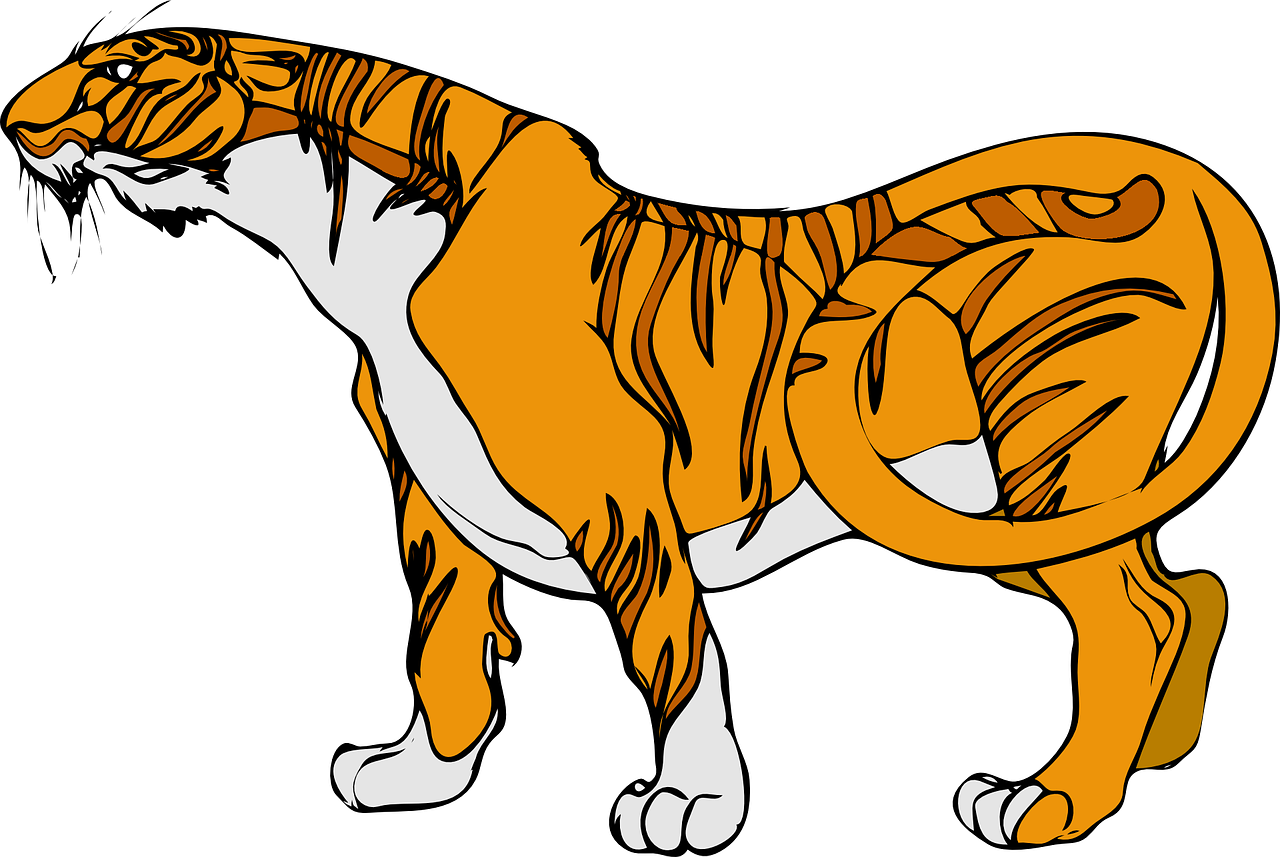Banded Great Cat
The Banded Great Cat is an extremely rare species of long-necked feline that lives in the far north of Aubren. This species has been subject to an excessive amount of poaching, and the prey loss they have suffered due to an ongoing drought has brought their numbers down to a dangerously low level.
Basic Information
Anatomy
Banded Great Cats are large felines, having a head-and-body length of about 100 inches. Nearly a third of their head-and-body length is the head and neck alone. The tail of a Banded Great Cat is an additional 65 inches in length.
These felines are heavily muscled, and their flexible spines allow them to make quick turns when chasing their prey.
Banded Great Cats have thick, soft fur which is in high demand on the black market. Although hunting these creatures is illegal throughout the entirety of their range, poachers have been taking an estimate of two-hundred individuals per year.
Genetics and Reproduction
Banded Great Cats produce litters of up to four cubs in the late spring. These cubs stay with their mother until the next spring, when they disperse.
Dietary Needs and Habits
Banded Great Cats are obligate carnivores, and typically feed on mountain goats and rodents. They will stalk their prey in silence until close enough to give chase or pounce.
Behaviour
The males of the species are strictly solitary, only meeting with other members of the species to breed, but the females will stay in small prides of up to four individuals. The females in a pride are typically littermates, although elderly females are occasionally also present.
Captivity
Captive Banded Great Cats must have an extremely large enclosure and multiple sources of enrichment to stay happy. Individuals who do not receive sufficient sources of play can begin to refuse food. Overall, captivity is only used as a last resort, typically for animals that cannot return to the wild, even by the breeding programs that are trying to save the species.
Lifespan
30-34 years
Conservation Status
Extremely rare in the wild, and captive breeding programs are failing
Average Length
165 inches from nose to tail-tip
Body Tint, Colouring and Marking
Bright orange with darker orange bands and white underbellies




Comments